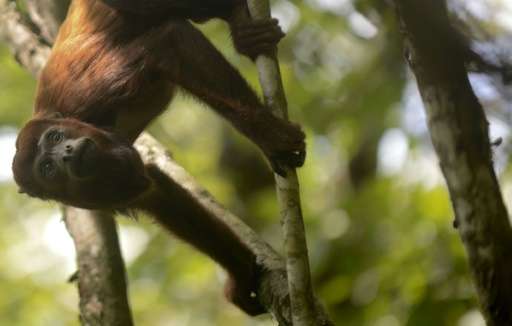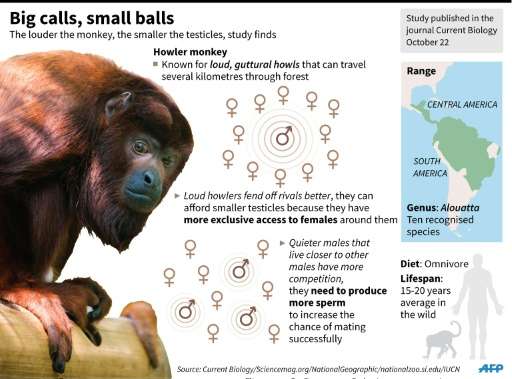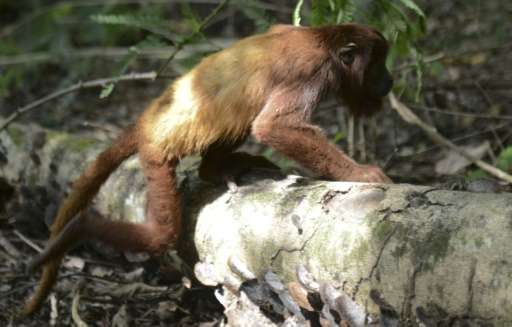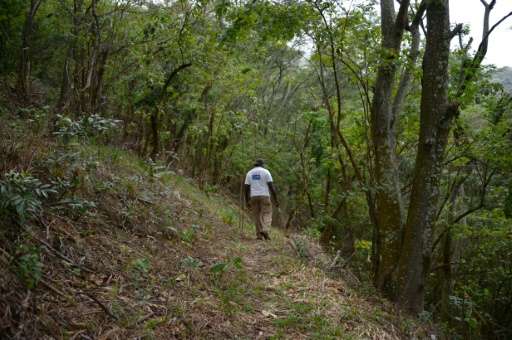Rio reintroduces howler monkeys after century's absence

Scientists have given Rio de Janeiro something to shout about with the reintroduction of howler monkeys to the city's famed Tijuca forest after a century's absence.
Tijuca, a thick forest rising up to the towering Corcovado and statue of Christ the Redeemer, is one of the world's largest urban woodlands. But environmental degradation has stripped the area of its fauna.
Now, Brazilian scientists are working to bring those riches back, including by releasing native howler monkeys, properly know as Alouattas.
"The howlers disappeared more than 100 years ago. We decided to reintroduce them because it is a resistant species. They essentially eat leaves and fruits, so they are relatively easy to reintroduce," said Fernando Fernandez, a scientist with the Federal University of Rio de Janeiro.
The first five monkeys were released in early September, a key moment in the program which has been in the works since 2010.
And the creatures are more than just a pretty—or furry—face.
In addition to filling the silent forest with their trademark cries, the monkeys' excrement, pushed around by dung beetles, helps fertilize soil and trees.
That's important because the authorities also want to save the endangered Atlantic forest, which once covered the Brazilian coast but today is reduced to about seven percent of what European explorers would have found 500 years ago.
In Rio, the Tijuca forest covers 39.5 square kilometers and has been preserved despite being just minutes from neighborhoods of the teeming city which will host next year's Olympics.

Tijuca administrator Enresto Vivero de Castro says the area can become "a laboratory for the rebuilding of the fauna that could work for other parts of the world."
Delicate relationships
The first monkeys let loose in Tijuca were all rescued from animal traffickers.
The modest speed of the project reflects the care needed to avoid any monkey business between potentially conflicting groups of the primates.
"The howler is the biggest monkey of the Atlantic Forest after the spider monkey. We got five individuals—three males and two females—and before releasing them we let them interact for five months in our research center," Fernandez said.
"It's very important because the Alouattas form social groups and stay together in the forest."
The pioneering animals are already one down from their original number.
The dominant male Chico expelled a young male named Cesar, so researchers pulled him from the project. However, Cesar should get a second chance with another group down the road.

Scientists monitoring the four identify the males by a bracelet and the females by a collar. Early reports are that things are going well.
"A month and a half later they are doing fine and are pretty close to where we released them," Fernandez said.
"There was some concern when the group met some capuchin monkeys, which are more aggressive. But in the end there wasn't a problem."
The more familiar danger to wildlife—humanity—will also have to play its part.

"We hope visitors won't feed them because that can be fatal. Dogs are a danger too," Fernandez said.
The plan now is to release new groups of howler monkeys over the next four years to create a self-sustaining population.
A similar program reintroduced rodents called cutias and also seeks to repopulate Tijuca with sloths, endangered golden lion tamarins and other native animals.
© 2015 AFP




















